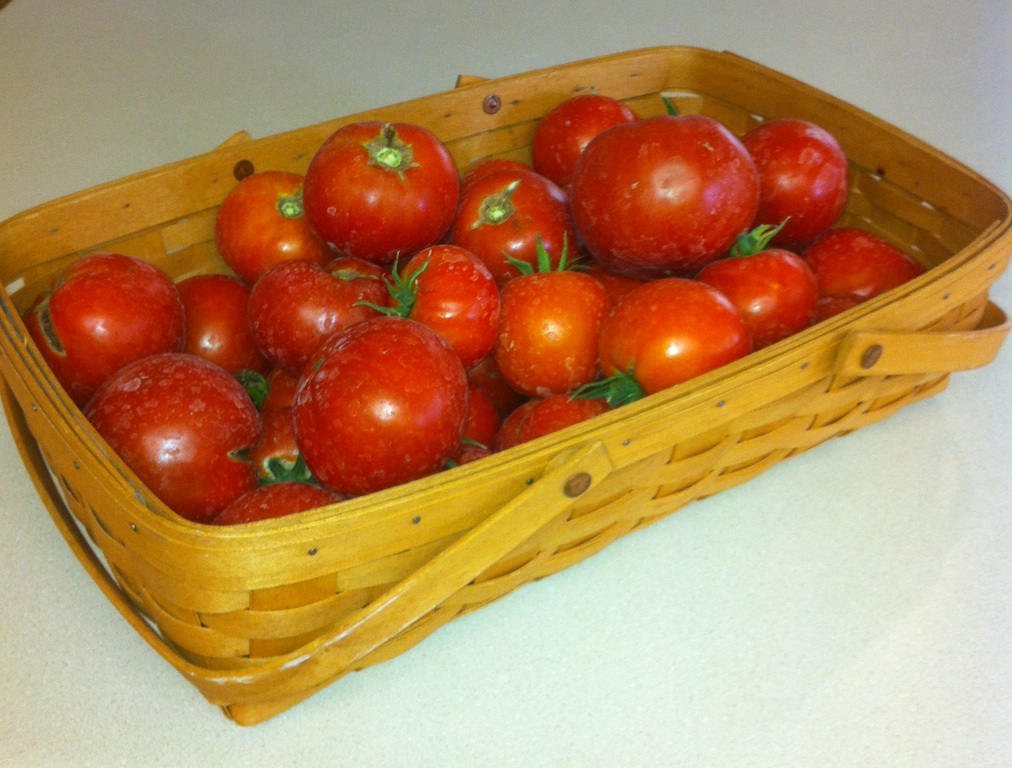Cabbage Dolma is the ultimate winter food, slow, savory, warming. Here’s how:
Ingredients:
- 2 large heads of green cabbage
- 2 lbs. lean ground beef
- 2/3 cup rice
- 2-4 Tbsp dried minced onion, or equivalent amount of fresh red onion, shredded.
- 2 tsp. salt
- 2 Tbsp. dried basil
- 2 small cans tomato sauce
Method:
Bring a large stock pot 2/3 full of water to the boil.

Cut the core out of the cabbage with a sharp knife. Make sure that you have cut out enough of the core that all the leaves are no longer attached at the center. Then submerge the cabbage in the water and keep at a simmer while you separate all the leaves from the core and transfer them to a colander to drain. You are par-boiling the leaves, just softening them enough to pull them away from the head using tongs and a large fork and allow later rolling around the meat filling. They will cook thoroughly later. Use any torn leaves and the innermost leaves that are too small to form rolls to line the bottom of a 12 quart stockpot. If you only have one, you’ll have to re-use it after par-boiling the leaves. Dump the water out of the pot, but preserve it for later.
Mix the meat, salt, rice, onion and basil thoroughly to create the filling. Add a little water to make it easier to mix everything together. When everything is thoroughly mixed together, begin rolling the leaves around the filling, placing about 2 Tablespoons of filling on a leaf with the thick end of the leaf facing away as shown:

Roll the cabbage leaf around the filling, tucking the sides over as you roll. When you reach the thick end of the leaf, cut away any part that is too thick to roll. Some leaves are so large you have to cut them down the middle. Some are too small. This one is just perfect and will probably not require any trimming but will form a nice, neat roll. Place rolls closely packed together in the stockpot as you work. When the bottom of the pot is covered with rolls, make another layer, and another until you run out of meat. You shouldn’t run out of leaves. If you do, you’ve not put enough filling in each leaf.
Pour the tomato sauce over the rolls. Cover the rolls with any leftover leaves. Add enough of the cabbage water or fresh water to just barely cover the rolls. Place a sturdy stoneware salad plate upside down over the rolls and gently press down. This serves as a weight to prevent the rolls from floating around and coming undone. Cover with the lid of the stockpot. Bring to a boil. Reduce heat and simmer for 1.5-2 hours. When done, you will have to carefully remove that plate before serving directly from the pot or transferring the rolls and plenty of the cooking juice to a serving bowl or deep platter. That plate is covered with tomato sauce and looks like it will never be the same again, but a trip through the dishwasher will put things right unless the plate is cracked or chipped in which case it’s time to toss it anyway.
Serve with Bulgur Pilaf, wet Lavash (run your pieces of dry lavash under warm water on both sides, stack on a plate and cover with a damp kitchen towel for 20 minutes) and Greek Style Yogurt (made into Tsatsiki-style sauce if you like) for a real traditional Armenian meal.
Okay, Bulgur Pilaf:
Bring 1.5 cups of water, 3/4 tsp. salt, 1 Tbsp. dried minced onion and 1 Tbsp olive oil or butter to a boil. Add 1 cup of coarse Bulgur (#4). Allow to return to a boil. Stir, cover and reduce heat to a simmer. Simmer for 25 minutes.
























